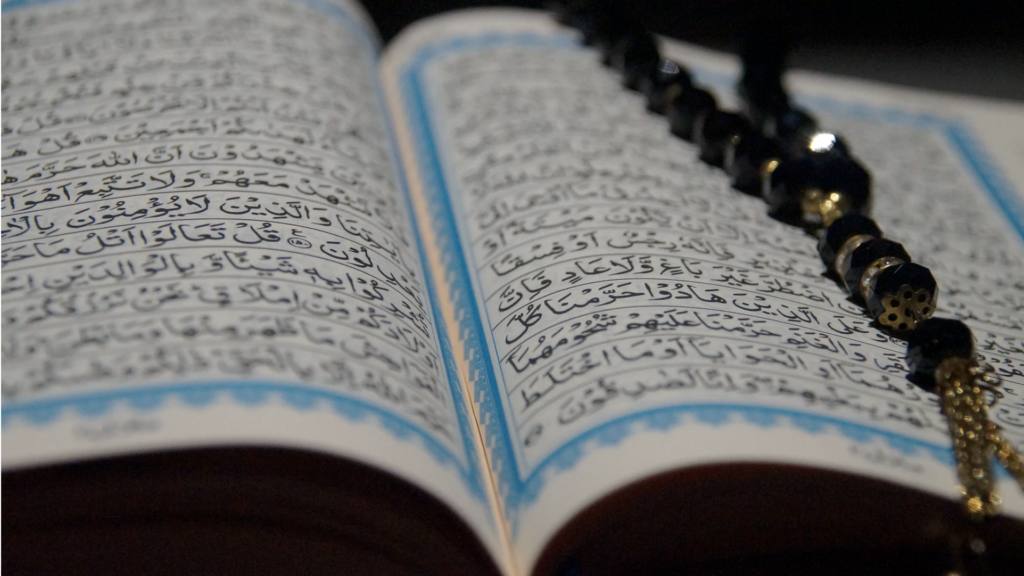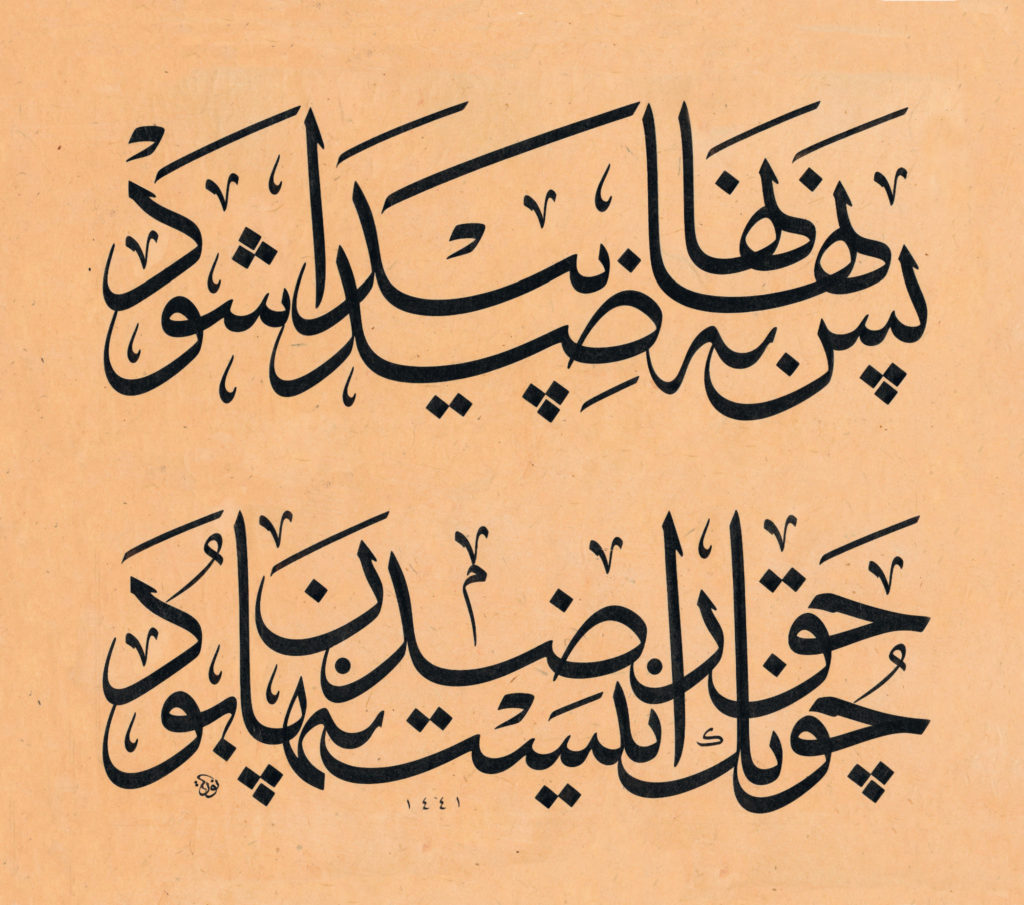Calligraphy in Arab Art
Calligraphy, the art of beautiful handwriting was carefully nurtured in many parts of the world. In the Middle East, Arabic calligraphy found its way into every part of human life. It has moved beyond paper and incorporated itself into many different art forms and materials. Apart from religious texts and Quranic quotes, Arabic calligraphers also created a variety of nonreligious scripts like poems or aphorisms. And calligraphy letters were also frequently used as decoration for glass, metal and other household items.

Check our upcoming events selected for you:
History of Arabic Calligraphy
To become a calligrapher, one would have to spend years practising with a calligraphy master. During the training, pupils would learn to copy the models produced by their teachers. This process would last for years, but once the pupils have mastered the technique, they were allowed to move on and create new works.
The best calligraphers had a special status and were always highly regarded in society. The best of the best were often commissioned to create elegant manuscripts. Their wealthy clientele included a lot of Middle Eastern rulers, and the best calligraphers were often permanently employed by them to work on the book production, within the palace.
Others were hired to create works that would be executed in other media, such as painting. The calligrapher’s job was to make the design on paper that would later be created in a new medium by other artists, and artisans. In later years, these designs and other single sheet works were gathered into albums and offered to collectors, which is why at some point, calligraphers begun to make single sheet works for albums specifically.
Later on, people started to appreciate calligraphy for its visual effect only. People began to hang calligraphy pieces on the walls like paintings, and admire their decorative effects. Apart from parchment and paper, calligraphy letters were also inscribed into ceramics, wood and other materials. Calligraphy ceramics were made by carving the inscriptions into the mildly cooled tiles, which were then covered with glazes and reheated to make them permanent. Sometimes letters were carved into the wood and then painted, to make them stand out, therefore creating unique woodcarvings.
Other times the art of cursive writing was used to decorate glass bowls or metalwork. Glass lamps, for instance, were made by decorating glass with enamel colours and gilt. After decorating the glass was warmed up, to allow the paint to set in and became the part of the lamp. A similar technique was applied to metalwork. The artisans would engrave calligraphy letters, on the brass surface and then fill them with silver, gold or black fillers to produce a decorative effect.

The Arabic Calligraphy Styles
The calligraphers used to cut the pen made from reed in different ways to achieve different effects. By cutting the nib of a pen at an oblique angle, calligraphers were able to write lines of various thicknesses which added diversity to their work. Another important factor that contributes to the formation of the calligraphy style is the nature of the baseline. In some scripts, the letters followed a horizontal line, while in others, groups of letters were tilted. They would usually begin above the line sliding downwards or upwards creating the so-called hanging effect.
But the thickness of lines is not the only tactic calligraphers used to make their pieces stand out. Some used silver and gold to make the writing more luxurious, or other bright colours to make their works more chromatically rich. Other times, they would outline their letters or would use different colours, styles or sizes of letters for separate paragraphs to make their work more visually impactful, without interfering with the clarity of the text.
The first formal style of calligraphy called Kufic, was used to copy early Quran manuscripts. Then in the 10th century, a new style appeared, that was more angular than the original writing. Also called Kaufic, the new style had several variants such as the floriated Kufic (which included flower forms) or foliated Kufic, (with curling leaf shapes).
Around the 13th century, the Kaufic style was replaced by a more rounded Naskh style. Many believe that the change was prompted when paper replaced parchment and papyrus, as the main material for writing scripts. Since the surface of the paper was a lot smoother than with the previous materials, it allowed artists to write with unprecedented ease.
Apart from these two major styles, there were plenty of regional styles which developed with an expansion of Islam. Maghrebi, a style characteristic of North Africa and the Iberian Peninsula in Europe, was marked by lines of even thickness, written with a pointed tip pen.
In the 16th century, in the Ottoman Empire, a cursive style called Diwani, appeared. Diwani is characterized by narrow spaces between the letters that moved upwards from right to left. Since the Diwani style was difficult to copy, due to its complicated stylizations, it was often employed in court documents to prevent falsification.
Nastaliq style was primarily used for nonreligious and literary works written in the Persian language, but some calligraphers also wrote Arabic language texts with Nastaliq. Often used for headings and titles, the style featured short vertical and broad horizontal strokes. Under the influence of China, the Sini style replaced a standard reed pen with a horsehair brush.

The Poetic Imagery in Arabic Calligraphy
In the Arabic world, calligraphy was used to express the finest emotions and convey wisdom from one generation to another. Find out more about the importance of calligraphy in Arabic culture, by joining our lecture The Language of the Hand: Poetic Imagery in Arabic Calligraphy that will take place online on April 15 (6:00 pm – 7:00 pm BST). The lecture will particularly focus on the use of calligraphy in recording poems and wise sayings and will offer in-depth knowledge about the Arab culture, as a whole.
Join our talk on ‘The Language of the Hand: Poetic Imagery in Arabic Calligraphy’ – register online today! RSVP ->


Leave a Reply